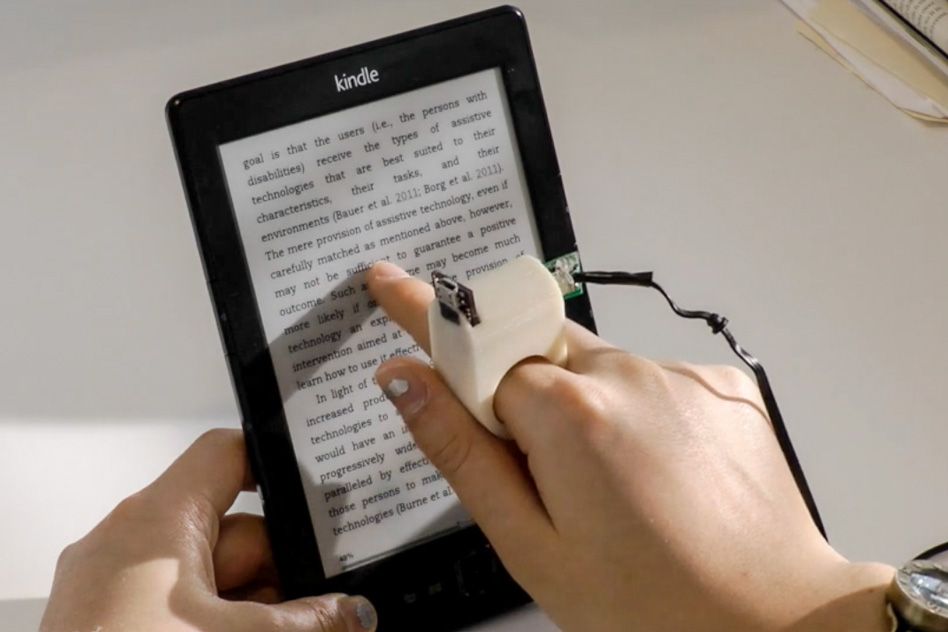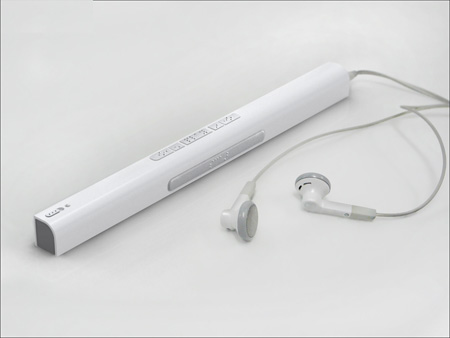Speech-to-Text Devices for Low Vision: Enhancing Accessibility
Speech-to-Text Devices for Low Vision: Enhancing Accessibility
Blog Article
Empowering Self-reliance With Assistive Modern Technology for the Blind
The integration of assistive modern technology right into the lives of people with aesthetic problems stands for a substantial advancement in promoting independence and self-sufficiency. From cutting-edge display visitors to sophisticated smart walking sticks, these tools not just boost everyday navigating and communication but likewise equip customers to involve meaningfully in different elements of life. As we check out the myriad benefits and real-world applications of these modern technologies, it comes to be important to check out the hidden aspects that contribute to their effectiveness and the possibility for future growths in this vital field.
Summary of Assistive Technology

The advancement of assistive modern technology is based in principles of inclusivity and empowerment. Advancements in software program, hardware, and sensory enhancements offer customers with options tailored to their particular requirements. From display readers that transform message to speech, to tactile devices that share details via touch, these devices change the method individuals engage with their environments.
In enhancement to sensible applications, assistive technology fosters higher social inclusion and participation in different markets, including education and learning and work (Smart glasses for the visually impaired). As research and growth remain to evolve, the capacity for assistive modern technology to additionally enhance the lives of aesthetically impaired individuals stays encouraging, leading the means for an extra fair culture where every person can prosper
Sorts Of Assistive Instruments
A variety of assistive gadgets have emerged to support individuals with aesthetic problems, each created to fulfill specific demands and improve day-to-day performance. These tools range from low-tech services to modern advancements, offering diverse options for users.
Low-tech devices include magnifiers and large-print products that assist in reading and writing. Braille devices, such as Braille styluses and slates, make it possible for responsive analysis and communication. Orientation and movement help, like white walking canes, aid individuals browse their atmosphere securely.
On the higher end of the spectrum, digital magnifying systems and display visitors offer significant assistance. Digital magnifiers enable individuals to enlarge text and photos on screens, while screen readers convert electronic material right into synthesized speech, promoting accessibility to details on smart devices and computers.
Mobile phone applications also play a critical duty, offering features like message recognition and navigating help. Wearable technology, such as clever glasses geared up with increased fact, is arising as an encouraging tool to improve situational understanding.
Advantages of Assistive Technology
The assimilation of assistive innovation substantially improves the lifestyle for people with visual problems. These modern technologies equip users by promoting self-reliance, enabling them to browse their atmospheres better and carry out everyday tasks with greater convenience. For circumstances, screen readers and zoom software application allow individuals to access digital information, cultivating educational and specialist chances that may have formerly run out reach.
Additionally, assistive tools such as clever walking sticks and GPS applications offer real-time navigation assistance, enhancing mobility and security. This boosted autonomy not visit this website just improves self-confidence but also motivates social involvement, enabling customers to participate more completely in their communities.
Assistive technology also helps with interaction, aiding individuals get in touch with others through voice recognition and text-to-speech applications. This capability is vital for preserving connections and accessing important info.
Additionally, the customization options offered with several assistive innovations make certain that individuals can customize tools to their particular needs, further enhancing functionality and efficiency. Overall, the benefits of assistive innovation for people with visual problems are extensive, promoting a much more inclusive society where everyone can pursue their goals and goals.
Case Researches and Success Stories
Highlighting the transformative effect of assistive modern technology, many study highlight exactly how individuals with visual impairments have effectively incorporated these tools right into their day-to-days live. One engaging instance entails an university pupil that utilized screen analysis software program to browse on the internet resources and scholastic materials successfully. This modern technology not just facilitated her education and learning but also enhanced her self-confidence in joining discussions and team tasks.
One go more case research features a professional that uses a smart device application developed for navigating and things recognition. By using this application, he has reclaimed freedom in both his individual and job settings, enabling him to commute individually and involve with coworkers much more successfully.
Furthermore, a retired person shared her experience with braille e-readers, which allowed her to access a substantial variety of literature and stay gotten in touch with her neighborhood via publication clubs.
These success tales underscore the essential duty of assistive technology in promoting independence, enhancing lifestyle, and advertising social integration for people with visual disabilities (Speech-to-text devices for low vision). By welcoming these innovative devices, customers can get rid of difficulties and take opportunities that add to their personal and professional gratification

Future Trends in Assistive Technology
Innovation in assistive technology is positioned to redefine the landscape of support for individuals with visual impairments. Emerging patterns highlight the assimilation of man-made intelligence (AI) and artificial intelligence, which browse around this web-site enhance the capability of tools that assist with navigation and information ease of access. As an example, AI-driven applications are currently with the ability of analyzing visual data in real-time, allowing customers to engage with their atmosphere extra independently.
In addition, the advancement of wearable innovation is progressing swiftly. Smart glasses outfitted with augmented fact (AR) can offer audio descriptions of surroundings, transforming how users engage with public areas. These tools not just promote autonomy but also foster social incorporation.
In Addition, the Web of Points (IoT) is making homes smarter, permitting smooth connectivity between daily appliances and assistive devices. This connection equips customers by enabling automatic reactions and voice-activated controls customized to specific requirements.
Final Thought
Finally, assistive technology plays a pivotal role in equipping individuals with aesthetic disabilities by improving their self-reliance and engagement with their environments. The diverse variety of applications and tools available not only assists in navigation and interaction yet additionally promotes social assimilation and possibilities for individual and professional development. As innovations proceed in this area, the capacity for improving the lifestyle for those with aesthetic impairments will increase, promoting better freedom and empowerment.

Report this page